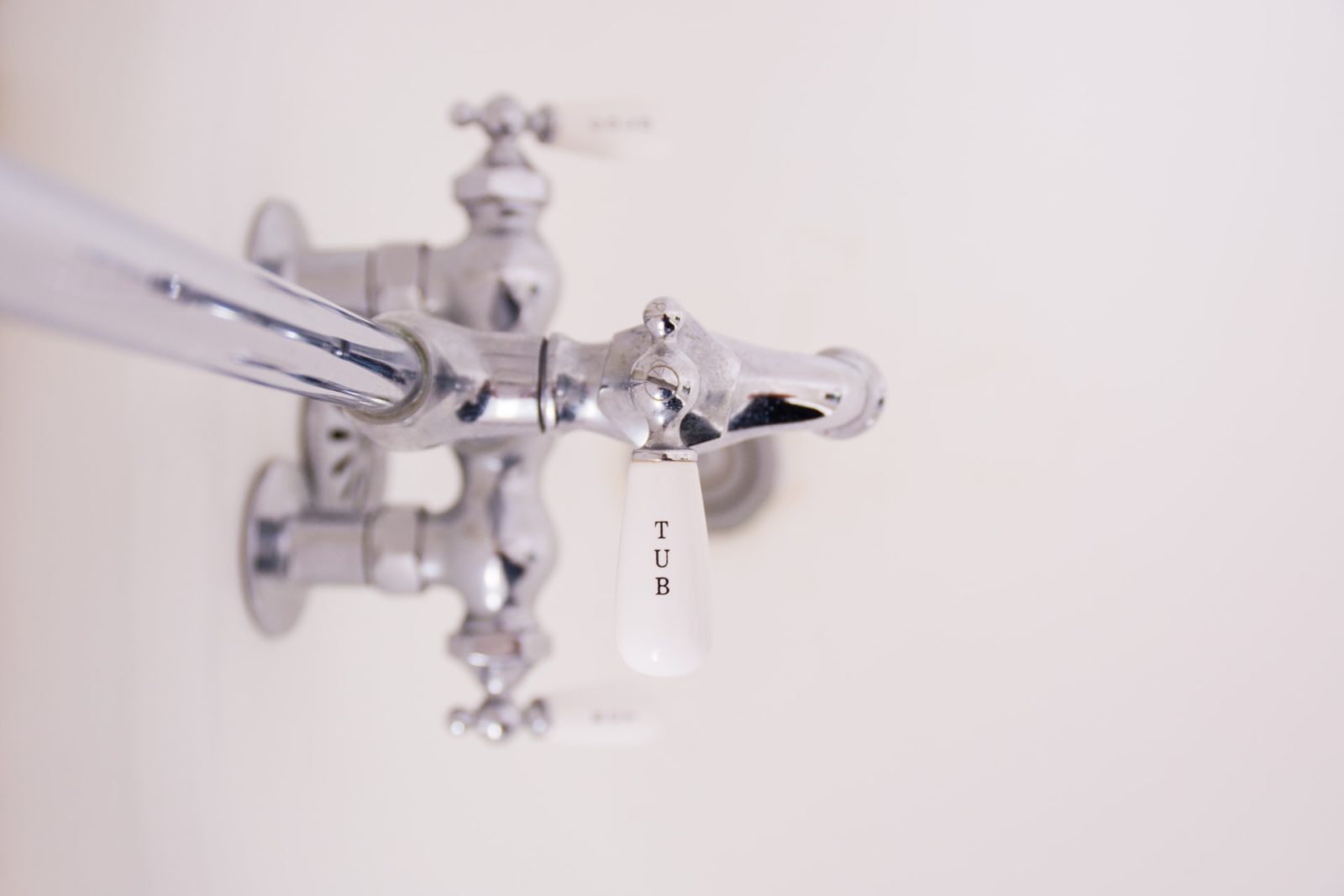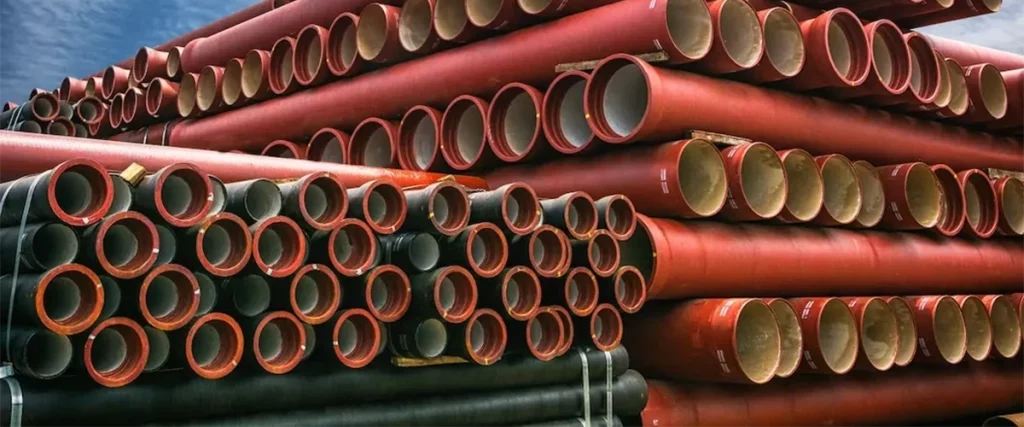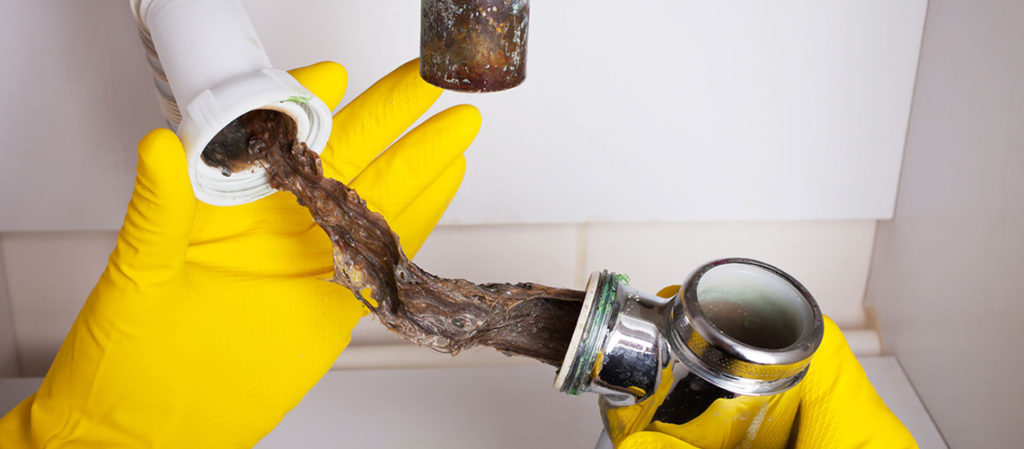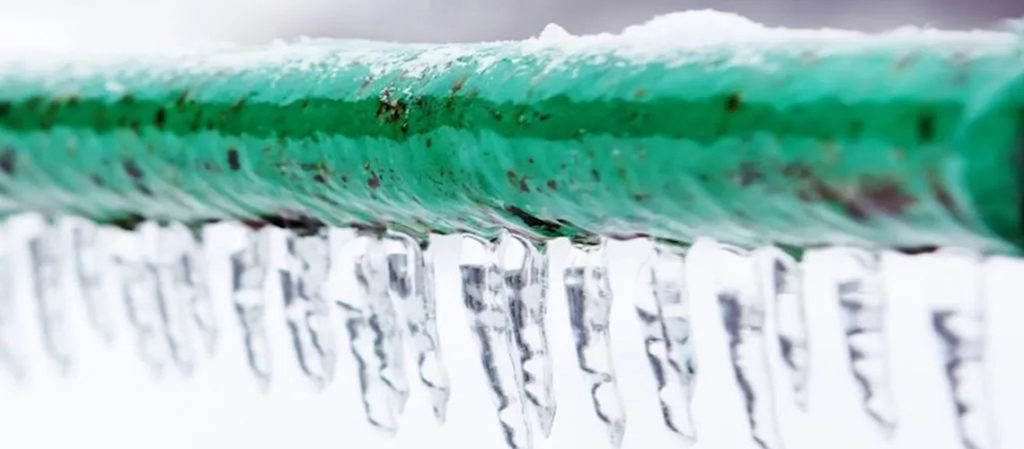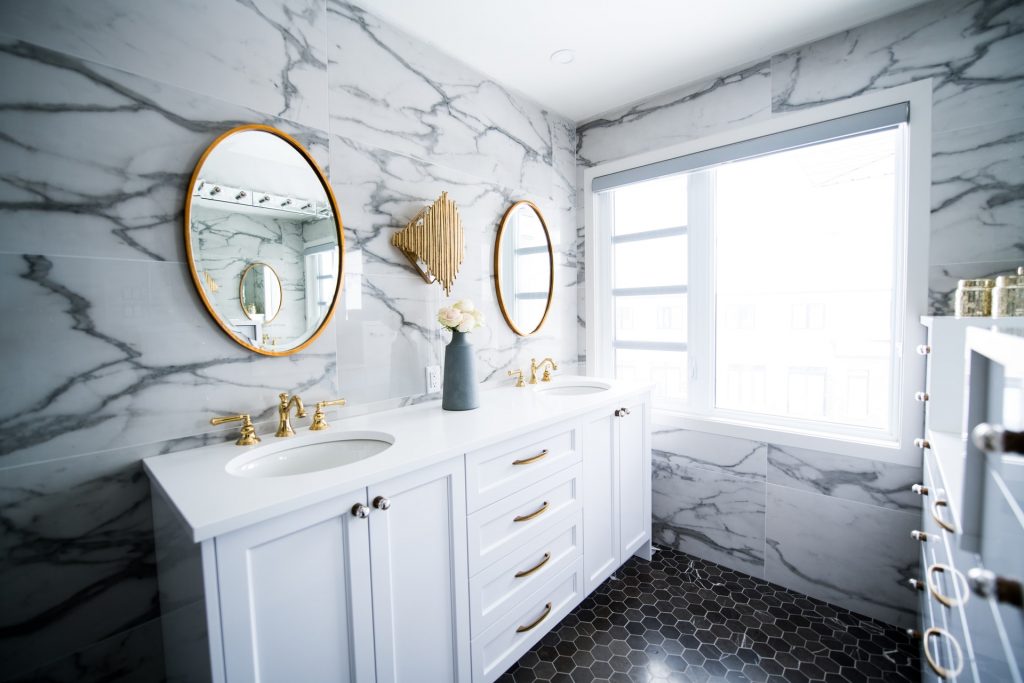Looking to replace your bathroom faucet? Before you go any further in the planning process, you should know some pros and cons in bathroom faucet design. There are many different kinds of bathroom faucet design, but not all of them are great for everyday purposes. The pros at POM Plumbing know a thing or two about the ins and outs of faucet design. So, we’re here to help you find the best choice for you and your home.
Knobbed Faucets
To start, let’s talk about faucets with knobs. These faucets are largely outdated, but can still be found in some places – usually older houses or public bathrooms. So, what’s the scoop on knobbed faucets?
Pros
The most prominent benefit over double-handled faucets is their ability to fit into certain interior design styles.
However, you could also make the argument that they’re more child-proof. If you have a small child who knows how to climb and likes to turn the sink on, knobs may be a roadblock. They take more coordination to turn, making them harder on small, uncoordinated hands.
Cons
What used to be a pro may yet become a con. Because small children have difficulty with knobbed faucets, when they begin potty training and need to wash their hands, they may need help with turning the water on and off well past the point when they’ve learned to wash independently.
Knobbed faucets can also be a pain for adults to use. If you have the kind of knobs that are more round and geometric or with vertical ridges, rather than having prongs on them, turning them off with wet hands can be a menace. Plus, turning them off with a paper towel can make it hard to get a grip. In settings where hygiene is important, that’s terrible news.
When a knobbed faucet springs a leak – something that happens in the lifetime of most faucets – knobbed faucets take more steps to fix. There are two different handles and the spout. That leaves three different places that can break.
Plus, knobs usually involve removing a cap from the top of the knob. That means, should your knob get loose from use, tightening it involves finding a small tool to pop the cap off with. Then, you have to use a screwdriver to tighten the screw holding it in place.
However, one of the most frustrating parts of knobbed faucets is how difficult they are to keep sanitary. The many edges and ridges can be hard to adequately wipe down.
Plus, those same edges and ridges fill with water frequently. Without diligent and effortful cleaning, they will harbor bacteria and, often, grow mold, which is then nearly impossible to remove entirely and is constantly fed by more water.
Continue Reading
Want to know about handled faucets? We’ve got some great information on those too! Check out double-handled faucets and single-handled faucets in our next guide to bathroom faucet design. If you have any questions, feel free to call and ask person to person. We love to hear from our readers!



